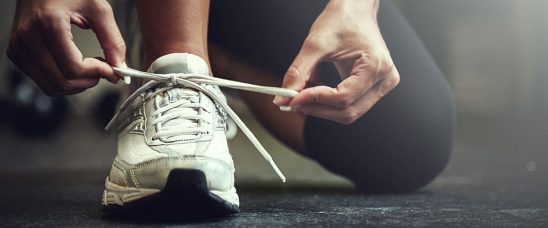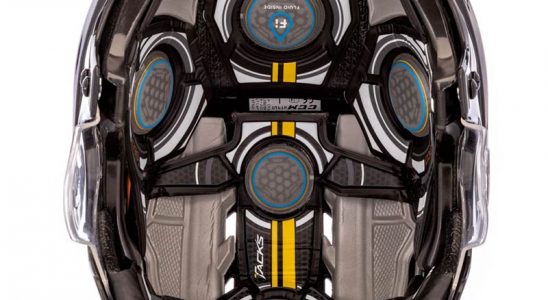Realities and Truth – The Real Story of Soccer Concussions and Heading
Soccer concussions don't come from heading the ball as much as you'd think. Read about soccer concussion myths, facts, prevention,…
Read More
The time to be outdoors walking, hiking and running is now. With social distancing and limited (or no) access to organized sports, outdoor activity proves to be a great way to maintain health and improve cardiovascular fitness during these challenging times. One advantage of these activities is there is minimal equipment required: a pair of shoes and comfortable athletic clothes. The right shoe can make the best of your experience and prevent sport related injuries.
When helping clients choose the correct shoe, there are a number of important things we like to teach about the foot, and its anatomy. The foot is designed to be a stable platform so we don’t fall over when are standing, walking or running. There are three major points of contact (think triangle): the heel, the base of the big toe, and the base of the little toe. The wider the two points between the big toe and little toe, the more stable when walking and running. Poorly fitting shoes, which can include those that are narrow or crowd toes, reduce the stability of the foot and may cause pain or injury. A common manifestation of poorly fitting shoes is the formation of bunions. 1
Shoe companies generally construct a shoe around fashion rather than function and, as such, they are not wide enough to allow the bones of the feet to splay (maximizing the space between the big toe and little toe) in their natural position. There is a simple way to determine if a shoe fits your foot. Remove the insole from the shoe and set it on the ground. Then step onto the insole, lining up your heel first. While weight bearing, examine the edges of your forefoot. Are your toes over the top of the insole? (The shoe is too short.) Is your foot protruding over the edges of the insole? (The shoe is too narrow.) These are both simple and effective ways to ensure the shoe fits! Ideally, your foot should not overhang the edges at all, and there should be a little less than 1cm of insole showing beyond your toes. Traditionally women have wanted to wear narrow shoes (possibly due to the vanity of having a narrow looking foot). Companies have, in turn offered women shoes in a ‘B’ width as a standard width – much too narrow for most people! A solution may be to try a men’s shoe, as the standard width is two ‘sizes’ wider (D width). Check to see if an ill-fitting shoe comes in a different width before checking for a different model.
Other things to investigate when buying athletic shoes are what are referred to as “drop” and “stack height”(which provides some level of cushion). Drop is the difference in height between the heel and the forefoot of the shoe. For example, the height of your heel from the ground may be 20mm, while the forefoot may be 14mm. This would have a “drop” of 6mm. Athletic shoes can have a drops ranging from 20mm down to zero. The drop of a shoe will affect how your foot strikes the ground and how the muscles are used when running or walking. 2 There is no evidence that injury rates are impacted by shoe drop. 2 As such, sticking to a drop that your body mechanics are used to is generally recommended. If you are used to running (or walking) in a 6mm drop shoe and have no injuries, then it would be recommended to continue to use a shoe that has a similar drop.
“Stack height” or cushion is the amount of shoe material (foam etc) between your foot and the ground. The distance or speed at which you are running or walking may change the shoes you choose based upon their cushion. Heavier runners or walkers, or those running longer distances, will typically do better with more cushion as it attenuates the shock during impact of the foot and may decrease the risk of impact related injuries.3 Beginner runners also typically do best with moderate to higher cushion running shoes as opposed to lower profile shoes, for the same reason. Increased speed, shorter distances, or improved efficiency may all be reasons to decrease the amount of stack height in your shoe and take advantage of the improved running or walking economy seen with a more minimal shoe. 3
To summarize, your walking or running shoes should meet all of the following criteria:
By considering all of these factors you are better positioned to support your bodies stable platform, the foot!
Look beyond the flashy colour, and when the shoe fits, get out the door and get moving.
Soccer concussions don't come from heading the ball as much as you'd think. Read about soccer concussion myths, facts, prevention,…
Read MoreIn today's fast-paced world, being a young and active woman often means juggling multiple responsibilities, from career ambitions to personal…
Read More
Hockey, a high-energy sport combining skill and strength, has witnessed an increased focus on player safety in recent years. The…
Read More